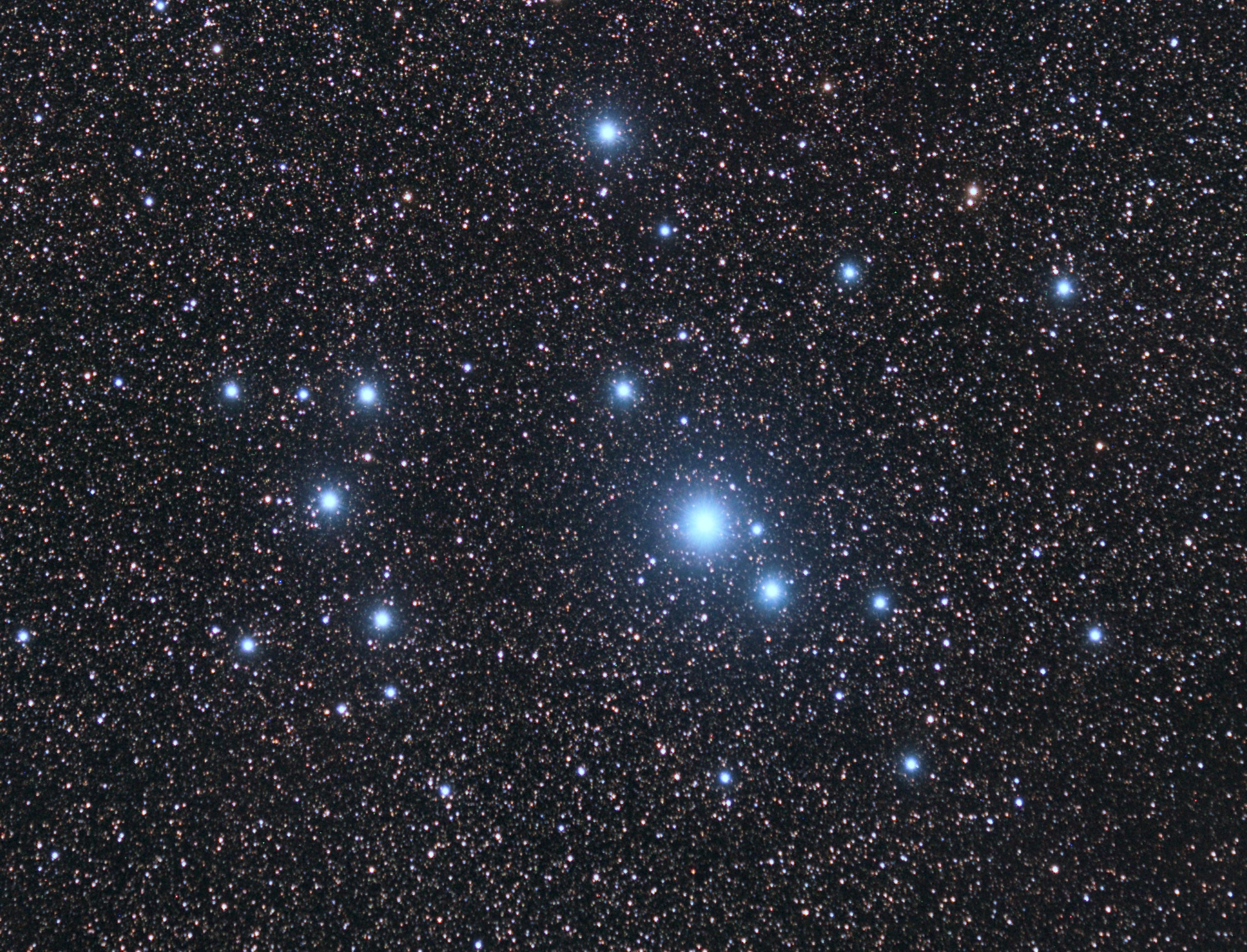
Just 4½° due south of Eta Carinae, at the northern tip of the Diamond Cross asterism, lies the 2nd-magnitude open star cluster IC 2602. Popularly known as the Southern Pleiades, it shines forth as the fifth-brightest open cluster in the entire heavens. This island of starlight harbors at least 60 members spread across 50′ of sky; some 30 of these stars shine brighter than 9th magnitude. And while the view of the cluster is dominated by the light of 3rd-magnitude Theta (θ) Carinae, ironically, that star is not a part of the group.
So why the Southern Pleiades moniker? Abbé Nicolas Louis de Lacaille thought this sparkling aggregation of largely blue-white diamonds looked “like the Pleiades” through his diminutive ½-inch 8x telescope. Using optical aid is the key — without question, the Southern Pleiades looks best through binoculars.
What’s weird is that the southern and northern Pleiades are, in their natures, near twins. Both are youthful, between 50 million and 100 million years young, respectively. The Southern Pleiades lies roughly 480 light-years away, while the Pleiades lies 448 light-years distant. Both sport at least 10 stars of 6th magnitude or brighter — though the remaining number of bright stars in the Pleiades trumps those of its southern rival.









